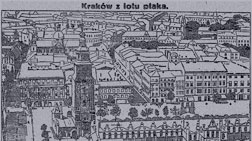The Slavic and East European Materials Project (SEEMP) acquires, preserves, and maintains microform and digital collections of unique, rare, and bulky or voluminous research materials pertaining to the field of Slavic and East European studies for its members. SEEMP emphasizes original preservation, either through microfilming or digitization, of newspapers, journals, books, archives, pamphlets, and other relevant materials from the region. Geographic areas of interest include the countries of Eastern and Central Europe (Albania, Belarus, Bulgaria, Bosnia and Hercegovina, Croatia, Czech Republic, Estonia, Hungary, Latvia, Lithuania, Republic of Macedonia, Moldova, Poland, Romania, Serbia and Montenegro, Slovakia, Slovenia, Ukraine), Russia, the Transcaucasian countries (Armenia, Azerbaijan, Georgia), and the Central Asian countries that were formerly part of the Soviet Union (Kazakhstan, Kyrgyzstan, Tajikistan, Turkmenistan, Uzbekistan).
Since its founding in 1995, SEEMP has focused the majority of its attention on acquiring and preserving regional newspapers, both contemporary and historical. SEEMP has also microfilmed a collection of books, periodicals, and pamphlets produced and published by Ukrainian Displaced Persons. Another collection of note includes rare and unique pamphlets (1925–40) in the Yakut, Kumyk, and Chuvash languages of the former Soviet Union.
SEEMP is made possible through the support of the Center for Research Libraries, which serves as its administrative, fiscal, and legal agent.
Some SEEMP microfilm is available for purchase. For more information, see Microform Sales.
Meeting Minutes and other information related to the ongoing work of SEEMP may be found in the SEEMP Workspace. The SEEMP Workspace is a wiki tool that members can access to review, edit, or add content. It is open to SEEMP members only.
For questions or information about SEEMP, contact Marlies Bauhofer.
